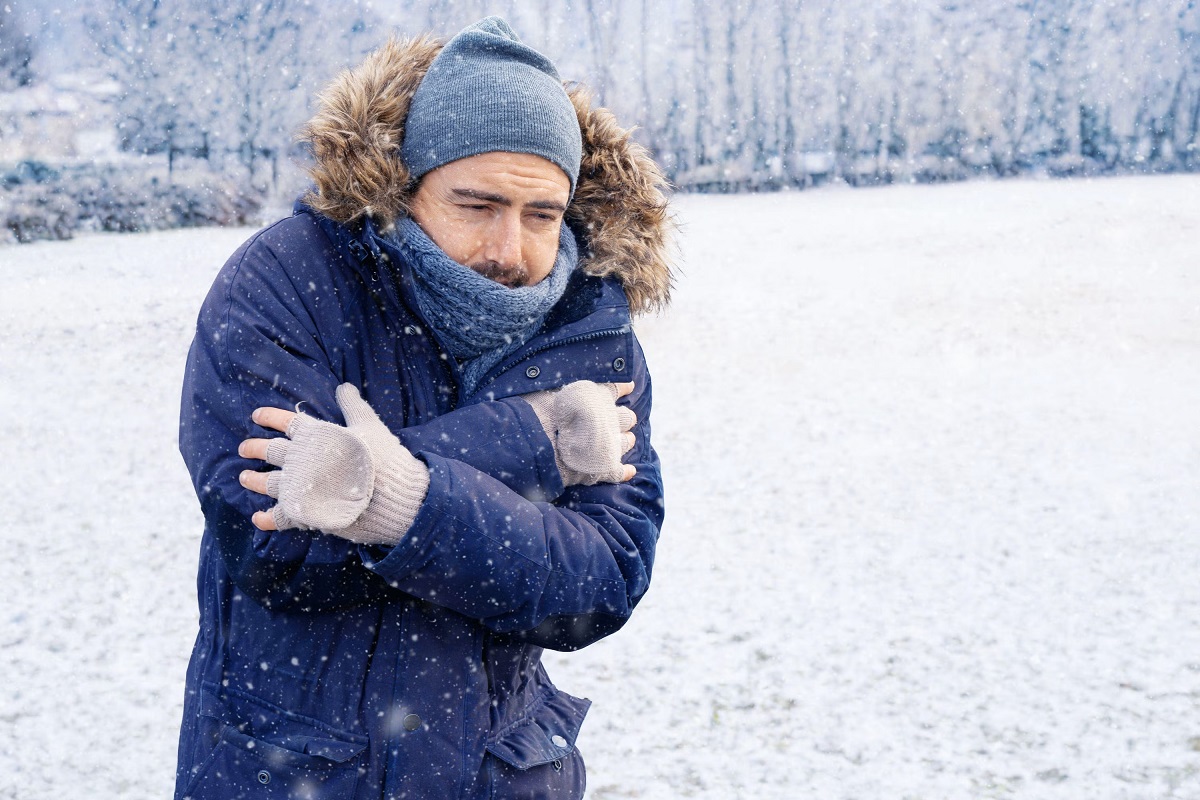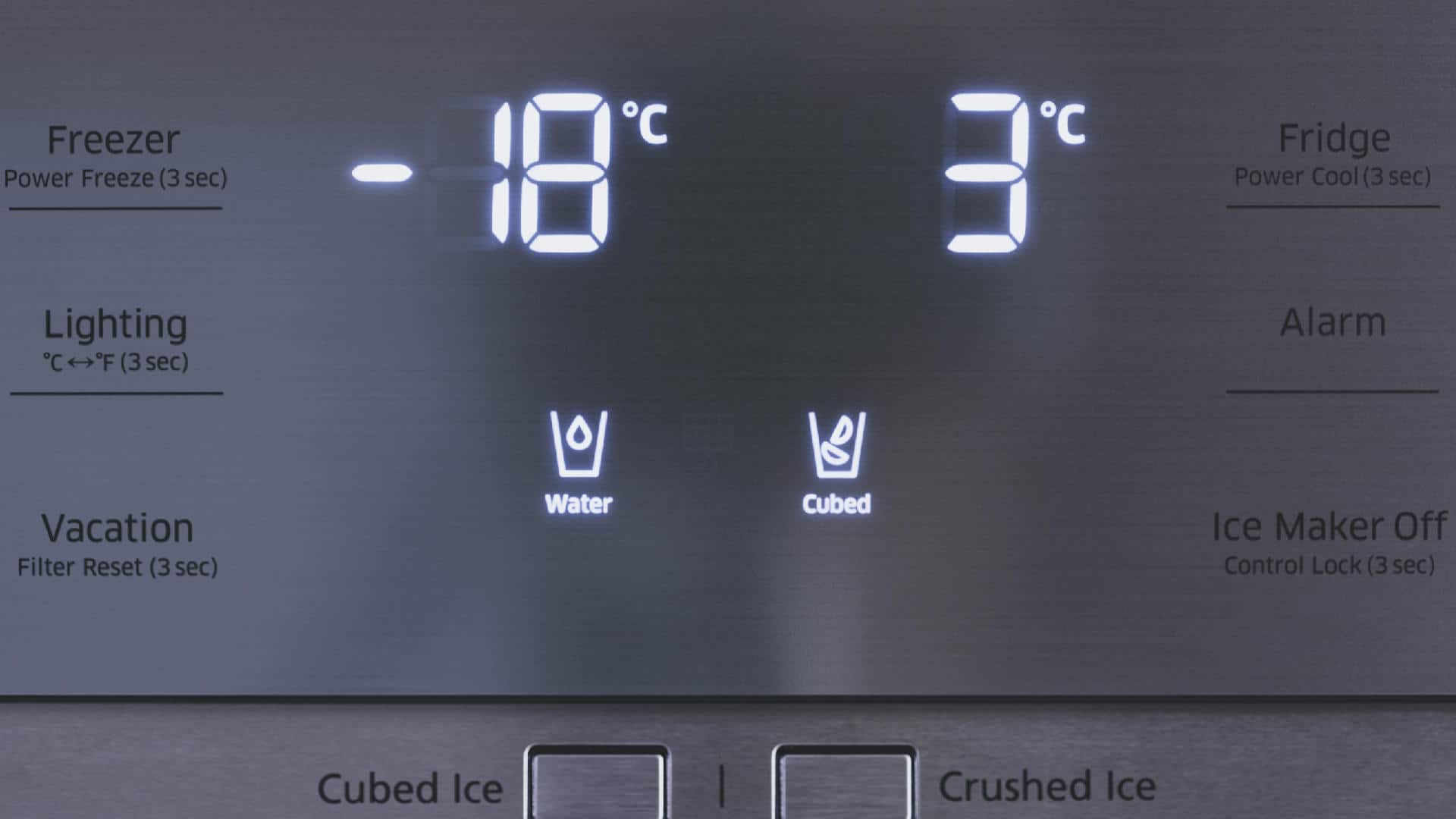Home>Health & Nutrition>The Impact Of Cold Temperatures On Work Performance


Health & Nutrition
The Impact Of Cold Temperatures On Work Performance
Published: February 19, 2024
Discover how cold temperatures can affect work performance and productivity. Learn practical health and nutrition tips to stay energized and focused in chilly environments.
(Many of the links in this article redirect to a specific reviewed product. Your purchase of these products through affiliate links helps to generate commission for Temperatures.com, at no extra cost. Learn more)
Table of Contents
Introduction
Cold temperatures can have a significant impact on various aspects of our lives, including our work performance. As the temperature drops, our bodies must work harder to maintain a stable internal environment, leading to physiological and psychological changes that can affect our productivity and overall well-being. Understanding the effects of cold temperatures on the body and exploring strategies to mitigate these effects is crucial for optimizing work performance in cold environments.
In this article, we will delve into the intricate relationship between cold temperatures and work performance, shedding light on the physiological responses to cold exposure and the subsequent implications for productivity. By examining the underlying mechanisms at play, we can gain valuable insights into how to effectively manage work performance in cold conditions. Additionally, we will explore practical strategies that individuals and organizations can implement to minimize the negative impact of cold temperatures on work performance and maximize overall productivity.
As we navigate the complexities of working in cold environments, it becomes evident that a comprehensive understanding of the physiological and psychological effects of cold temperatures is essential for developing tailored approaches to enhance work performance. By addressing these challenges proactively, individuals and organizations can create conducive work environments that promote optimal productivity, even in the face of cold temperatures.
Understanding the Effects of Cold Temperatures on the Body
Cold temperatures trigger a series of physiological responses in the human body as it strives to maintain internal equilibrium. When exposed to cold environments, the body's natural defense mechanisms come into play to preserve core temperature and ensure survival. Understanding these effects is crucial for comprehending the impact of cold temperatures on work performance.
One of the primary responses to cold exposure is vasoconstriction, the narrowing of blood vessels near the skin's surface. This physiological reaction serves to conserve heat by reducing blood flow to the extremities, thereby minimizing heat loss. As a result, individuals may experience a decrease in dexterity and tactile sensitivity in their hands and fingers, making fine motor tasks more challenging to perform efficiently.
Furthermore, prolonged exposure to cold temperatures can lead to increased muscle tension as the body attempts to generate heat through shivering. This involuntary muscle contraction not only expends energy but also contributes to muscle fatigue, potentially impeding physical performance and coordination.
Cold temperatures also impact metabolic processes within the body. To sustain core temperature, the body may prioritize heat production over other metabolic functions, potentially affecting energy levels and cognitive function. Additionally, cold-induced stress can elevate levels of cortisol, a hormone associated with increased alertness and stress response, which may influence concentration and decision-making abilities.
Psychologically, cold temperatures can induce feelings of discomfort and distraction, diverting attention away from tasks at hand. The body's natural inclination to seek warmth and comfort may lead to decreased motivation and engagement, further impacting work performance.
Understanding these intricate physiological and psychological effects of cold temperatures on the body is essential for devising effective strategies to mitigate their impact on work performance. By recognizing the challenges posed by cold environments, individuals and organizations can implement targeted interventions to optimize productivity and well-being in such conditions.
The Relationship Between Cold Temperatures and Productivity
The impact of cold temperatures on productivity extends beyond mere discomfort; it encompasses a complex interplay of physiological, cognitive, and behavioral factors. As individuals navigate work in cold environments, the effects of low temperatures on their physical and mental well-being can significantly influence their overall productivity.
Physiologically, exposure to cold temperatures can lead to increased muscle tension and reduced dexterity, affecting the ability to perform intricate tasks with precision. The body's natural response to conserve heat through vasoconstriction may compromise fine motor skills, potentially hindering productivity in tasks that require manual dexterity.
Furthermore, the metabolic demands imposed by cold environments can influence energy levels and cognitive function. The body's efforts to maintain core temperature may divert resources from cognitive processes, impacting concentration, decision-making, and overall mental acuity. This can manifest as reduced efficiency and effectiveness in completing complex cognitive tasks, ultimately affecting productivity.
Psychologically, the discomfort and distraction induced by cold temperatures can diminish motivation and engagement, leading to decreased productivity. The innate inclination to seek warmth and comfort may divert attention away from work-related responsibilities, impacting overall task performance and output.
Moreover, the psychological stress elicited by prolonged exposure to cold environments can contribute to fatigue and emotional strain, further impeding productivity. The combination of physical discomfort and psychological stress can create a challenging work environment, potentially diminishing individuals' ability to perform optimally.
Organizational productivity can also be affected by cold temperatures, as the collective well-being and performance of employees contribute to overall output. In cold work environments, employers may observe reduced team morale, increased absenteeism, and decreased overall productivity, highlighting the broader impact of low temperatures on organizational effectiveness.
Understanding the intricate relationship between cold temperatures and productivity is essential for developing targeted interventions to mitigate the negative effects of cold environments on work performance. By recognizing the multifaceted challenges posed by low temperatures, individuals and organizations can implement tailored strategies to optimize productivity and well-being in cold work settings. Through proactive measures and a comprehensive understanding of these dynamics, it becomes possible to create conducive work environments that promote optimal productivity, even in the face of challenging cold temperatures.
Strategies for Managing Work Performance in Cold Temperatures
Implementing effective strategies to manage work performance in cold temperatures is essential for optimizing productivity and well-being in challenging environments. By proactively addressing the physiological and psychological effects of cold exposure, individuals and organizations can create conducive work settings that promote optimal performance. Here are several targeted strategies for managing work performance in cold temperatures:
-
Optimize Thermal Comfort: Prioritize thermal comfort by providing appropriate cold-weather gear, such as insulated clothing, gloves, and headwear, to employees working in cold environments. Ensuring that individuals are adequately protected from the cold can enhance their physical comfort and reduce the physiological strain associated with low temperatures.
-
Encourage Regular Movement: Promote regular movement and physical activity to maintain circulation and warmth. Encouraging employees to engage in brief stretching exercises or take short, active breaks can help alleviate muscle tension and enhance blood flow, contributing to improved physical comfort and dexterity.
-
Provide Warm Break Areas: Establish warm break areas where employees can seek respite from the cold. Creating designated spaces with adequate heating allows individuals to periodically warm up, fostering psychological comfort and providing a reprieve from the challenges of working in cold conditions.
-
Optimize Lighting and Visibility: Ensure adequate lighting and visibility in cold work environments to mitigate the impact of reduced dexterity and tactile sensitivity. Well-lit workspaces can enhance safety and facilitate task performance, minimizing the potential impediments posed by decreased fine motor skills in low-temperature settings.
-
Implement Task Rotation: Introduce task rotation to vary physical and cognitive demands, allowing individuals to alternate between activities to prevent prolonged exposure to cold-related challenges. Task rotation can help mitigate the cumulative effects of cold temperatures on physical and mental performance, promoting sustained productivity.
-
Offer Warm Beverages: Provide access to warm beverages, such as hot tea or coffee, to help individuals maintain internal warmth and psychological comfort. Warm drinks can serve as a comforting and invigorating resource, contributing to enhanced motivation and well-being in cold work environments.
-
Promote Open Communication: Foster open communication channels to address individual concerns and challenges related to working in cold temperatures. Encouraging employees to voice their experiences and providing avenues for feedback can facilitate the identification of specific needs and the implementation of targeted support measures.
By implementing these strategies, individuals and organizations can effectively manage work performance in cold temperatures, mitigating the adverse effects of low temperatures on productivity and well-being. Through proactive measures and tailored interventions, it becomes possible to create work environments that support optimal performance, even in the face of challenging cold conditions.
Conclusion: Maximizing Work Performance in Cold Environments
In navigating the complexities of working in cold environments, it becomes evident that a comprehensive understanding of the physiological and psychological effects of cold temperatures is essential for developing tailored approaches to enhance work performance. By addressing these challenges proactively, individuals and organizations can create conducive work environments that promote optimal productivity, even in the face of cold temperatures.
By recognizing the multifaceted challenges posed by low temperatures, individuals and organizations can implement tailored strategies to optimize productivity and well-being in cold work settings. Through proactive measures and a comprehensive understanding of these dynamics, it becomes possible to create conducive work environments that promote optimal productivity, even in the face of challenging cold temperatures.
Implementing effective strategies to manage work performance in cold temperatures is essential for optimizing productivity and well-being in challenging environments. By proactively addressing the physiological and psychological effects of cold exposure, individuals and organizations can create conducive work settings that promote optimal performance.
By implementing these strategies, individuals and organizations can effectively manage work performance in cold temperatures, mitigating the adverse effects of low temperatures on productivity and well-being. Through proactive measures and tailored interventions, it becomes possible to create work environments that support optimal performance, even in the face of challenging cold conditions.
In conclusion, by understanding the intricate relationship between cold temperatures and productivity and implementing targeted interventions to mitigate the negative effects of cold environments on work performance, individuals and organizations can foster a culture of resilience and productivity, even in the most challenging of cold work environments.















